Succession to the Crown: Queen Elizabeth II
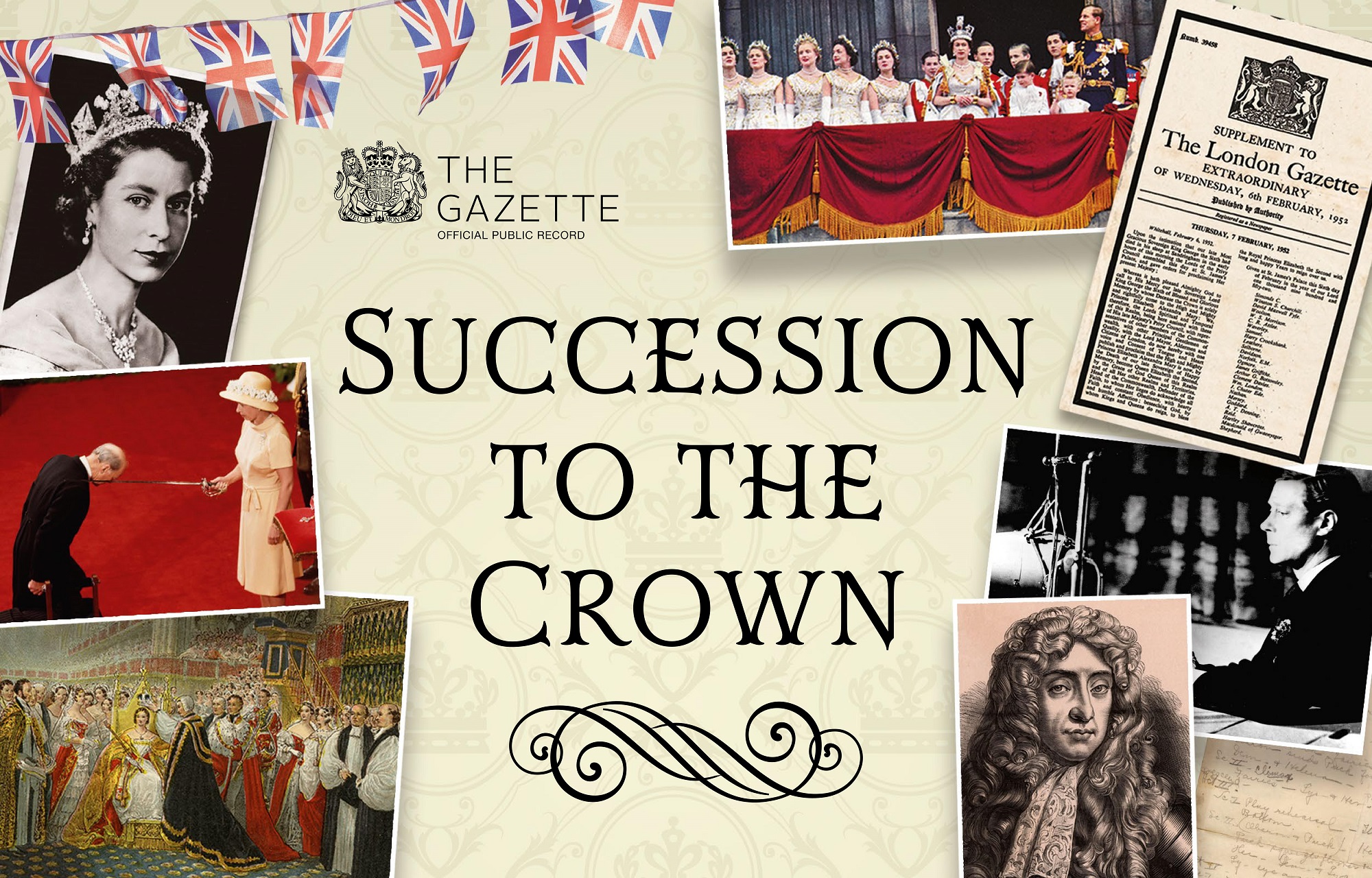
As the official public record since 1665, The Gazette has been recording successions to the Crown for over three centuries. As part of our ‘Succession to the Crown’ series, historian Russell Malloch looks through the archives at the accession and reign of Queen Elizabeth II, as described in The Gazette.
Chapters
Succession to the Crown paperback
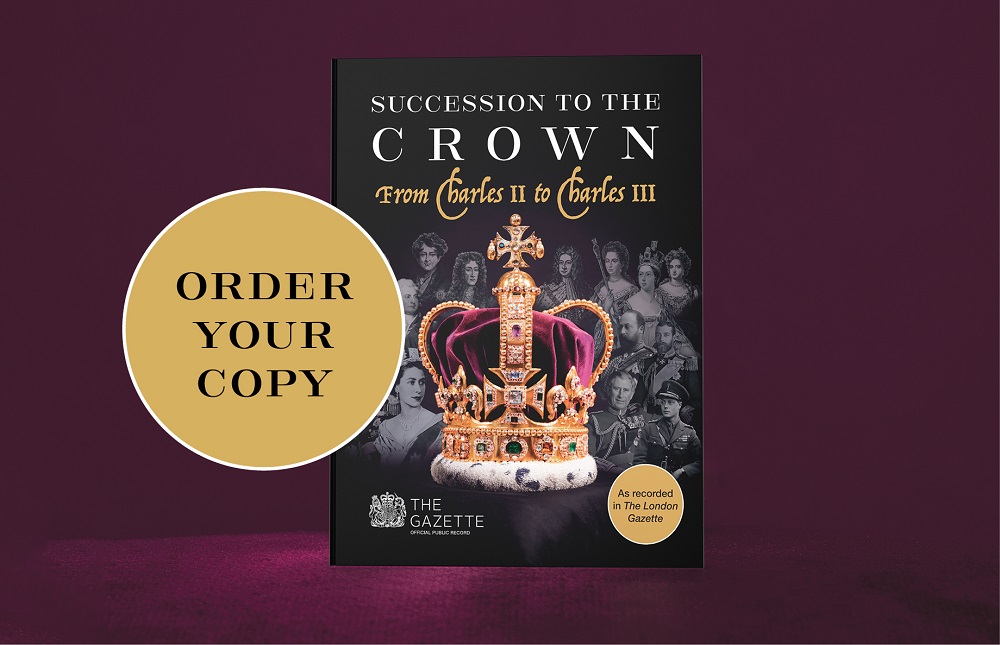
To celebrate the new king’s coronation, The Gazette’s Succession to the Crown series has been released in paperback.
Available to order now from the TSO Shop, the Succession to the Crown paperback explores the coronations, honours and emblems of the British monarchy, and includes an exclusive chapter on the accession of King Charles III.
Find out more in the link below.
Head of the Commonwealth
Princess Elizabeth was in Kenya at the start of her tour of the Commonwealth when her father died at Sandringham in Norfolk on 6 February 1952 (Gazette issue 39458). She was the first sovereign since 1714 (when George I was in Hanover) to be outside the realm when they succeeded to the Crown.
The Queen’s absence led to the decision to hold two councils to deal with the transfer of the royal authority within the United Kingdom, while separate arrangements were made in Canada, Australia, New Zealand and in the Queen’s many other realms.
The sequence of events in London was illustrated by the communications that were sent to Lord Normand, who sat on the court of claims for the 1937 coronation, and who was now a judicial member of the House of Lords, while his colleague Gavin Simonds – who had argued the case for Lord Hastings to carry the golden spurs at the 1937 ceremony – was now the lord chancellor, and was the first person to sign the Queen’s accession proclamation.
First council 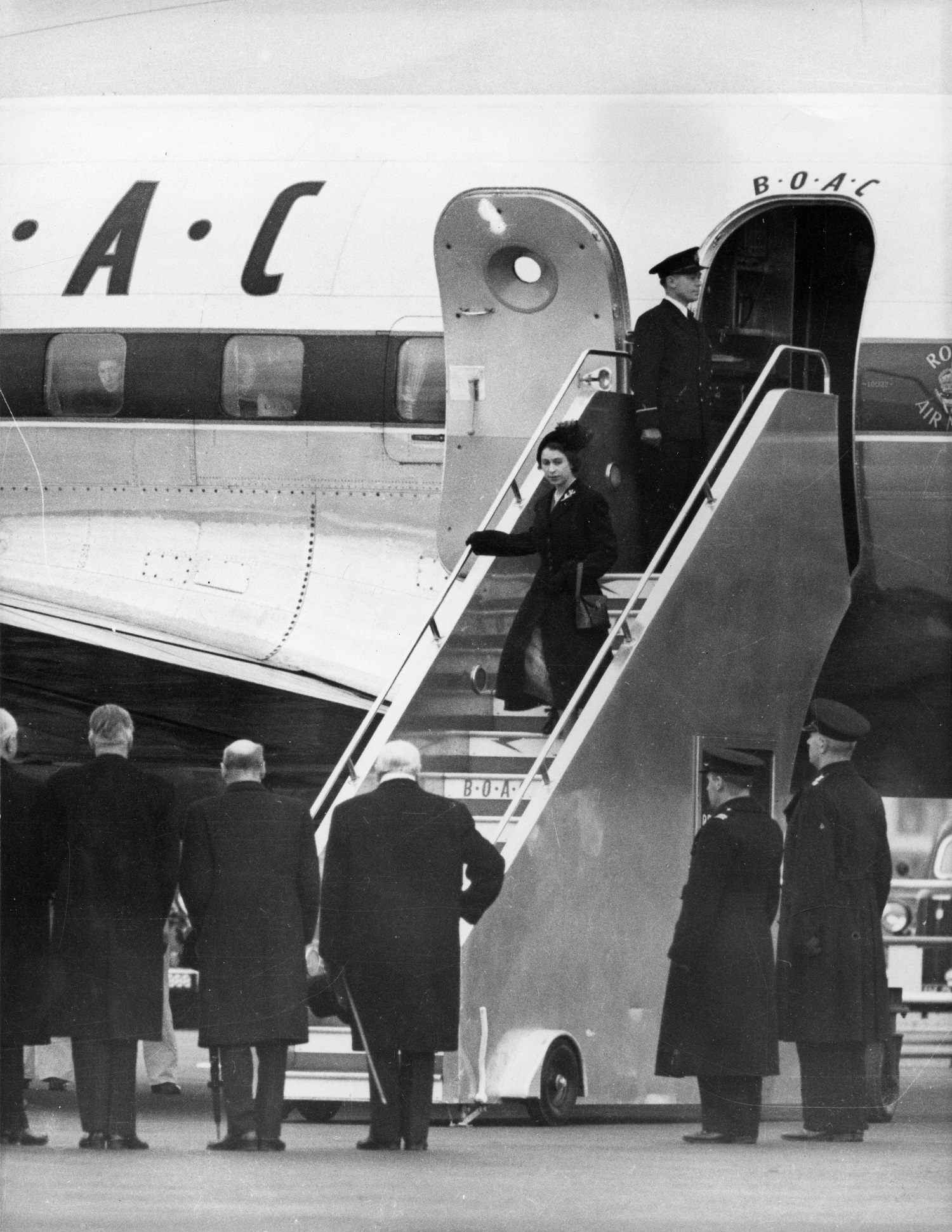
There were around 300 privy counsellors when the following letter was sent from the Privy Council Office on the day the King died:
“Let the messenger acquaint the lords and others of Her Majesty’s Most Honourable Privy Council, that the Accession Council is appointed to meet at the Court at St James’s Palace (entrance Ambassadors Court) on Wednesday, the 6th day of this instant February at 5 p.m. of the clock.”
At this first meeting, the counsellors acted in a way that recalled the terms of the Succession to the Crown Act of 1707 that regulated what was to happen when Queen Anne died, which stated that they “shall with all convenient speed cause the next Protestant successor entitled to the Crown […] to be openly and solemnly proclaimed […] in such manner and form as the preceding kings and queen respectively have been usually proclaimed after the demise of their respective predecessors”. There was, however, no threat of high treason or penalty of death for any counsellors who failed to do so, as there had been in 1714.
Lords Normand and Simonds and their colleagues proclaimed that “the Crown is solely and rightfully come to the high and mighty Princess Elizabeth Alexandra Mary” who is “now, by the death of our late sovereign of happy memory, become Queen Elizabeth the Second, by the Grace of God Queen of this Realm and of all Her other Realms and Territories, Head of the Commonwealth, Defender of the Faith”.
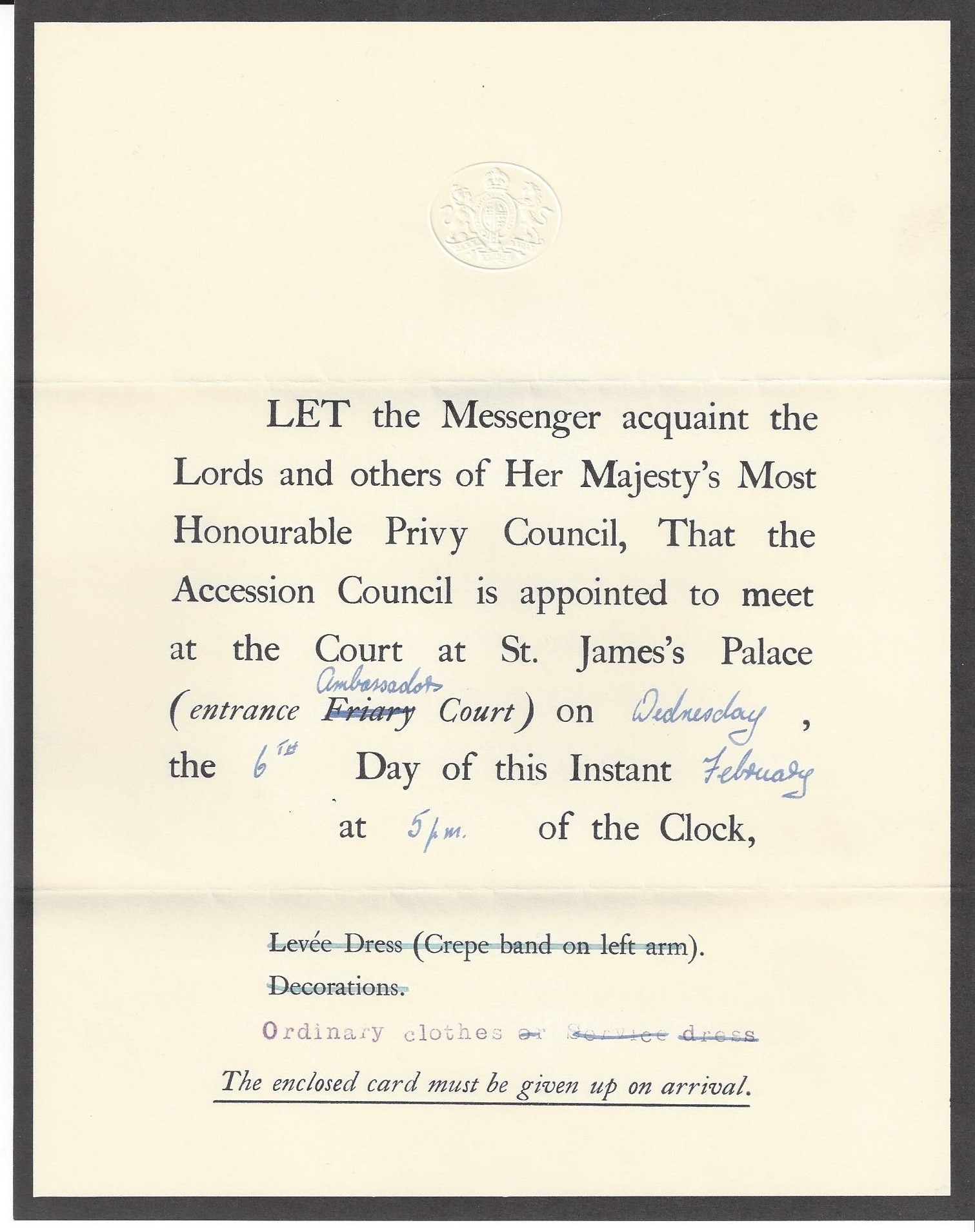
The proclamation reflected what the Queen’s father had described in his accession declaration as the British Commonwealth of Nations, the existence of which had resulted in “representatives of other members of the Commonwealth” being invited to attend the ceremony along with the more familiar lords spiritual and temporal, members of the late sovereign’s Privy Council, other principal gentlemen of quality and the lord mayor, aldermen and citizens of London.
The Commonwealth representatives included the high commissioners of Ceylon, India and Pakistan, as well as Stanley Bruce, the former prime minister of Australia; Vincent Massey, the governor-general elect of Canada; and Walter Nash, the leader of the Opposition and future prime minister of New Zealand. The international nature of the Queen’s authority was also noticed in the accession declaration, which referred to her desire to advance the happiness and prosperity of “peoples spread all the world over” and to the role of the counsel of “their elected parliaments”.
The Gazettes of the 20th century showed that many of the peoples and parliaments of whom the Queen spoke in 1952 would later alter their relations with the Crown, as some opted for a different constitutional arrangement that had no place for a monarch – as in the case of Ceylon, Kenya and South Africa – while Australia, Canada and New Zealand chose to retain their personal links with Queen Elizabeth, although not always with the British honours system.
Second council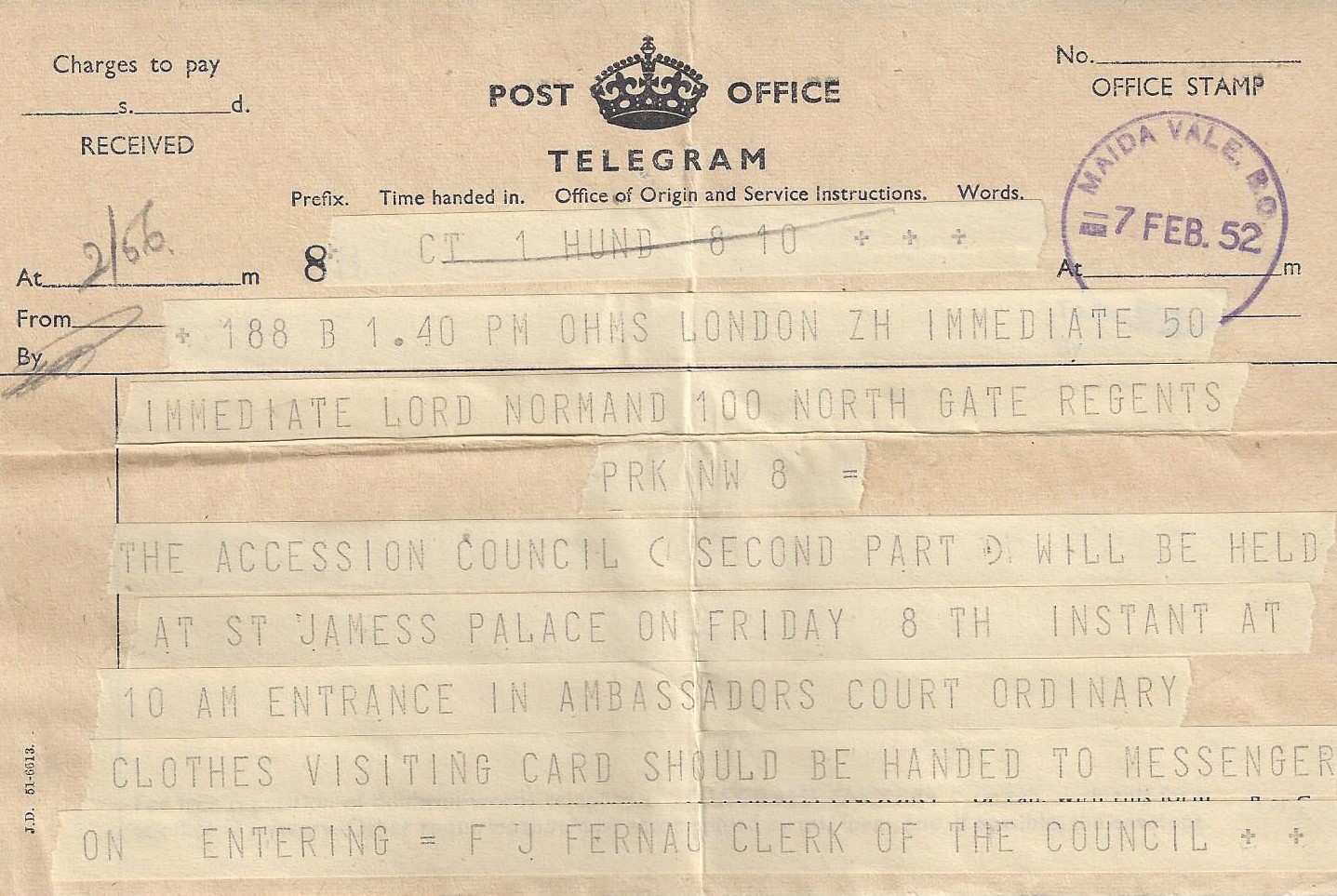
The Queen returned from Kenya on 7 February, and a telegram was sent to Lord Normand at his London residence on that day:
“The Accession Council (second part) will be held at St James’s Palace on Friday 8th instant at 10am. Entrance in Ambassadors Court. Ordinary Clothes. Visiting card should be handed to messenger on entering. F J Fernau, Clerk of the Council.”
The Gazette recorded the two items of business, starting with the Queen’s personal declaration in which she pledged to “always work to uphold constitutional government and to advance the happiness and prosperity of my peoples, spread as they are all the world over” (Gazette issue 39463). She then addressed the narrower subject of the security of the Church of Scotland.
The accession proclamation was read in the usual manner by Sir George Bellew, Garter king of arms, at Friary Court after the conclusion of the second council, during a ceremony that was broadcast on radio and television, and during which the public learned the name of their new monarch, although it was a name that would seldom be used.
The wording of the accession document was unusual and confusing, as the title “Queen of this Realm” was taken from the text of earlier coronations rather than accession proclamations. This appears to have been a deliberate change in the council’s approach to the royal titles, rather than an oversight on the part of the clerk of the Privy Council, Francis Ford Fernau, whose brief tenure of that office ended in difficult circumstances with his resignation a few weeks before the coronation (Gazette issue 39898).
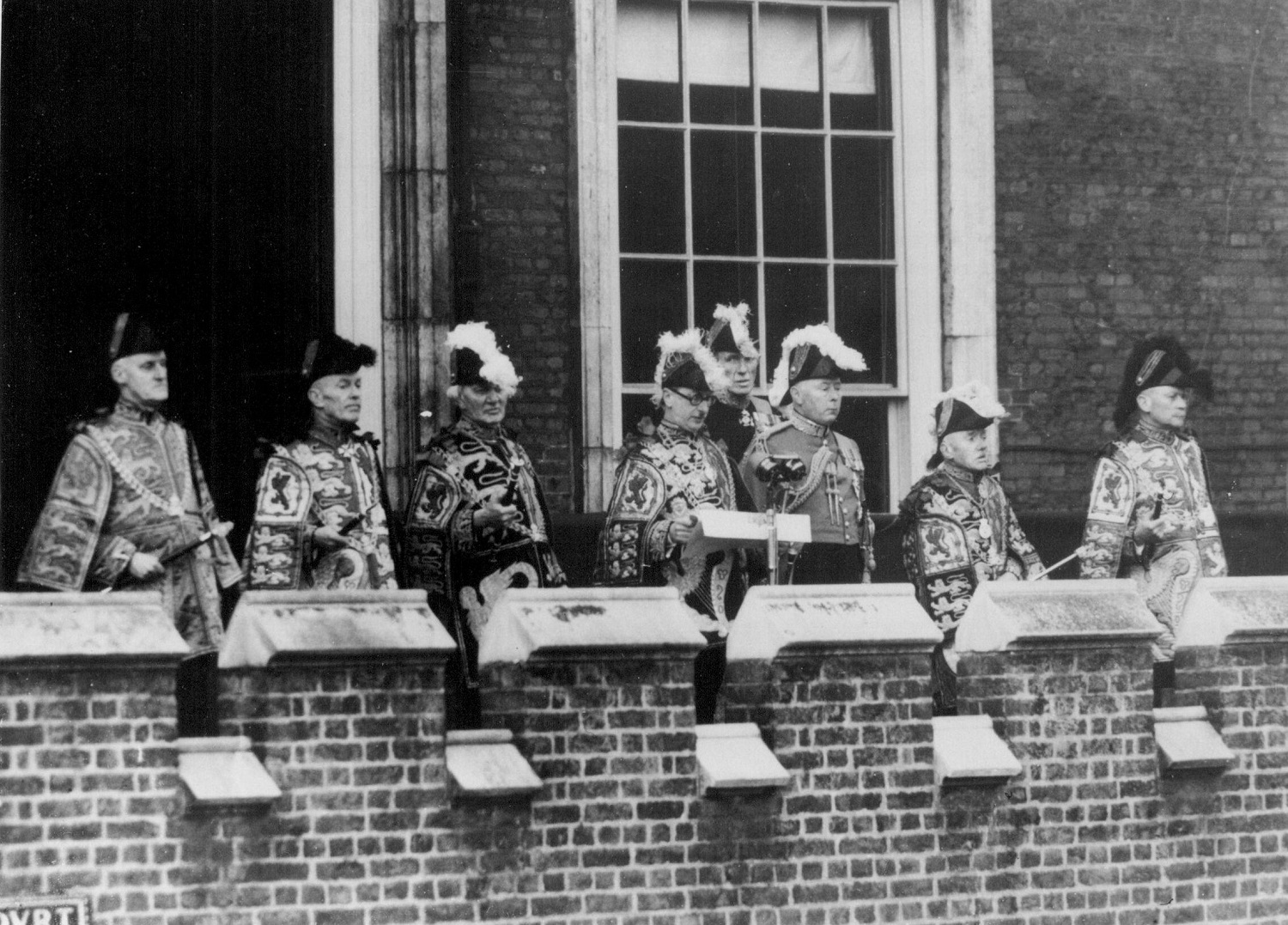
The titles that appeared in the accession proclamation in London and were announced by Sir George Bellew at St James’s Palace were seldom used, and instead the Queen’s name was rendered in accordance with the terms of the royal proclamations that were made under the Royal And Parliamentary Titles Act 1927 and the Indian Independence Act 1947, namely as “Queen of Great Britain, Ireland and the British Dominions beyond the Seas” without the title “Head of the Commonwealth”.
This statutory version of the royal title, which paid no regard to the altered state of Ireland, was used in preference to the Accession Council titles in most formal settings, including the warrants of appointment for the Order of the British Empire that were issued in connection with the birthday honours list in June 1952 (Gazette issue 39555) and the warrant of December 1952 that regulated the Duke of Edinburgh’s precedence in Scotland (Gazette issue 39747).
The Queen’s titles were amended by statute shortly before the coronation, when a proclamation was issued by and with the advice of the Privy Council, and in accordance with the provisions of the Royal Titles Act 1953, which referred to the expediency of altering “the style and titles at present appertaining to the Crown” so as “to reflect more clearly the existing constitutional relations of the members of the Commonwealth to one another and their recognition of the Crown as the symbol of their free association and of the sovereign as the head of the Commonwealth”.
The proclamation introduced the style and titles to be used in the United Kingdom, and in all of the other territories for which the United Kingdom government was responsible for foreign relations, which was “Elizabeth the Second, by the Grace of God of the United Kingdom of Great Britain and Northern Ireland and of Her other Realms and Territories, Queen, Head of the Commonwealth, Defender of the Faith” (Gazette issue 39873). Different provisions were made by the authorities who were responsible for the government of the Queen’s other realms.
As happened in May 1927 and June 1948, when proclamations were issued to change the royal titles to take account of developments in Ireland and India, no large gathering of counsellors was organised to approve the most recent change, and the meeting on 28 May 1953 at which the Queen’s status was settled was attended by only nine counsellors, including Lord Simonds as lord chancellor, and Winston Churchill as prime minister.
Royal changes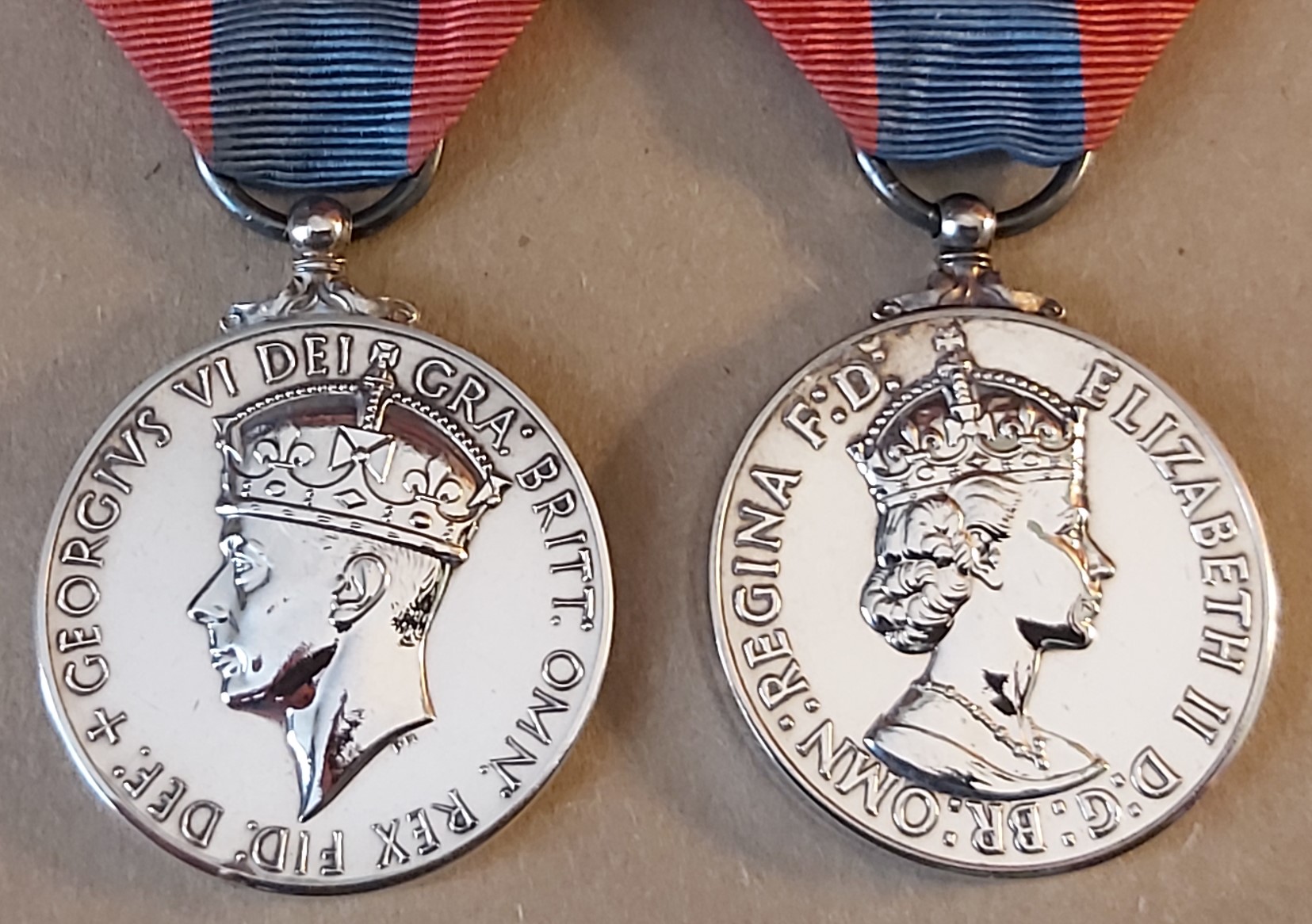
As had been the normal practice since the accession of Edward VII in 1901 (Gazette issue 27270), steps were taken to alter the sovereign’s effigy and/or cypher on the insignia of the orders, and on many of the decorations and medals that were conferred on the sovereign’s behalf, as well as the wording of the documents connected with the grant of dignities.
The statutes of the orders were amended from time to time, but there was no material change to the provisions that regulated the exercise of the royal authority within the orders, and no extension of the right to confer the honour of knighthood beyond a narrow group of governors-general. That power came to be of limited practical importance within the Commonwealth as the reign progressed, as the dignity of knight bachelor and the senior classes of the orders were seldom awarded in any of the Queen’s realms apart from Australia and New Zealand.
Another familiar situation arose in 1952, as Prince Charles was only three years old when his mother came to the throne, and assent was soon given to the latest in the series of bills that were drafted to secure the proper exercise of the royal authority (Gazette issue 40022). The 1953 Act provided for the Duke of Edinburgh to be the regent should the need arise, although no regency was ever needed, as the Queen’s children all attained the age of 18 years.
The law relating to the succession was examined towards the end of the 20th century, at a time when constitutional changes were being implemented in the United Kingdom, and then again in the early part of the 21st century, when the succession was altered to take account of changes in society and public opinion as to the nature of the monarchy.
In November 1998 assent was given to legislation that led to the establishment of the Northern Ireland Assembly and Scottish Parliament, but the statutes declared that any Act of the assembly or parliament was not law if it was outside their legislative competence and related to an excepted or reserved matter, one of which was “the Crown, including the succession to the Crown and a regency”.
Assent was also given to the Succession to the Crown Act 2013, whose main aim was to allow the succession to be determined on the basis that the gender of a person born after 28 October 2011 did not give them, or their descendants, precedence over any other person. The Act also stated that a person was no longer disqualified from succeeding to the Crown, or from possessing it, as a result of marrying a person of the Roman Catholic faith. The principal provisions of this Act did not come into force until March 2015 and have had no immediate impact on the destination or exercise of the royal authority. Had similar legislation been in force when Queen Victoria died in 1901, the dowager German empress, rather than the Prince of Wales, would probably have been named in the accession proclamation.
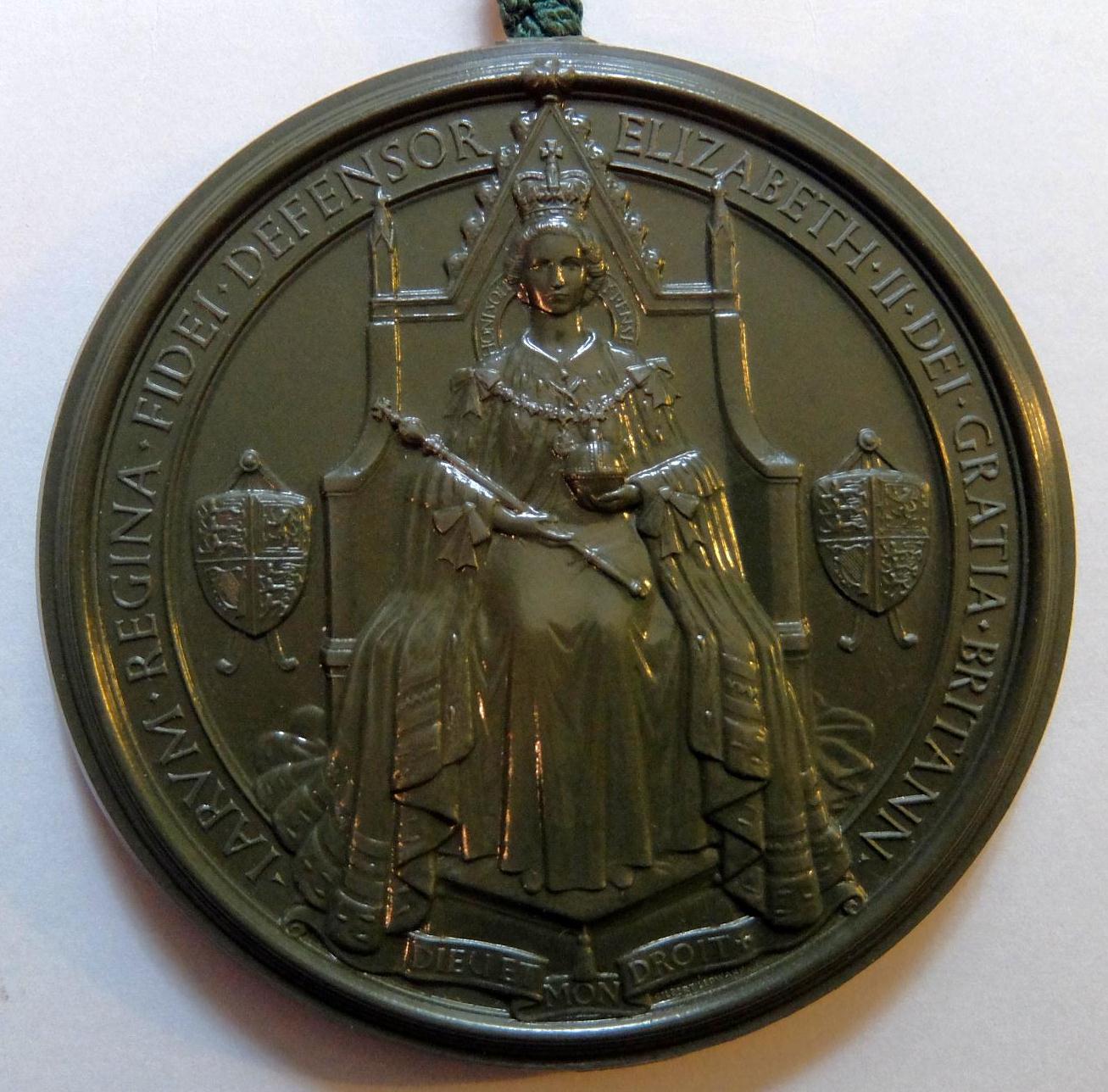 Counsellors of state
Counsellors of state
The statutory authority for appointing counsellors of state during Queen Elizabeth’s absence from the United Kingdom was the Regency Act of 1937 (as amended), and this enabled several letters patent to be issued under the great seal to manage the royal functions when the sovereign visited her realms, or paid state visits to other nations.
The legislation covered long absences, such as the Queen’s visit to Australia, New Zealand and other parts of the Commonwealth between November 1953 and May 1954, and the more usual absences that lasted for only a few days, as happened during the state visits to King Frederick IX of Denmark in May 1957 and President Gronchi of Italy in April 1961.
The first patent of this kind was issued on 20 November 1953 and delegated the royal authority to five of the Queen’s close relatives: the Queen Mother, Princess Margaret, the Duke of Gloucester, the Princess Royal and the Earl of Harewood (Gazette issue 40022). A familiar format was used, which limited their ability to sign “warrants fiats submissions and other documents” connected with the award of honours, decorations and medals, the wearing of foreign orders in the United Kingdom, and the amendment of the statutes of the orders.
The text of the 1953 patent was published in The Gazette, and a similar procedure was followed until 1980, when the official notices began to report that a patent had been issued, but without providing the names of the counsellors or information about the reserved matters. The last complete text to be gazetted related to the Queen’s visit to Australia in May 1980 (Gazette issue 48195), while the notice about the patent from October 1980, which incorporated visits to the Presidents of Algeria, Italy and Tunisia, Pope John Paul II and King Hassan II of Morocco, contained no details about the counsellors or the reserved matters.
There were no material changes to the way the royal authority was delegated with regard to the operation of the honours system within the United Kingdom, and many investitures were performed by members of the royal family on the Queen’s behalf. Recent examples were reported in The Gazette in May 2021 in connection with the patents that allowed the Prince of Wales, the Duke of Cambridge and the Princess Royal to knight those men whose names featured in a bi-annual honours lists (Gazette issue 63346).
Commonwealth changes
Fundamental changes were made to the Crown’s relations with the Commonwealth during the Queen’s reign, with the result that the royal authority in the United Kingdom differed from the powers the sovereign could exercise in her other realms, say as queen of Australia, or queen of Canada, where she possessed separate and different powers that underpinned the operation of the honours systems that evolved in those nations.
In this respect, Queen Elizabeth acted as queen of Canada in creating the Order of Canada in 1967, as queen of Australia in establishing the Order of Australia in 1975, and as queen of New Zealand in instituting the Queen’s Service Order in 1975. She also witnessed the emergence of other roles linked to the grant of honours, including the roles that were assigned to the person holding the office of the governor-general in connection with awards that operate in some of the Commonwealth realms, as with the “societies of honour” that were created by the Jamaican legislature following the introduction of the National Honours and Awards Act of 1969.
The constitutional changes since 1952 were commemorated by a series of independence medals, and The Gazette recorded some of the related documents, as in the case of the royal warrant of September 1960 that established the Nigerian Independence Medal (Gazette issue 42156). The Gazette subsequently reported the warrants for Sierra Leone in 1961 (Gazette issue 42341), Uganda in 1962 (Gazette issue 42800) and Malawi in 1964 (Gazette issue 43387), while the last independence medal warrant to be gazetted was signed by Sir Alec Douglas-Home, the foreign secretary and former prime minister, in September 1970 to commemorate the constitutional changes in Fiji (Gazette issue 45231).
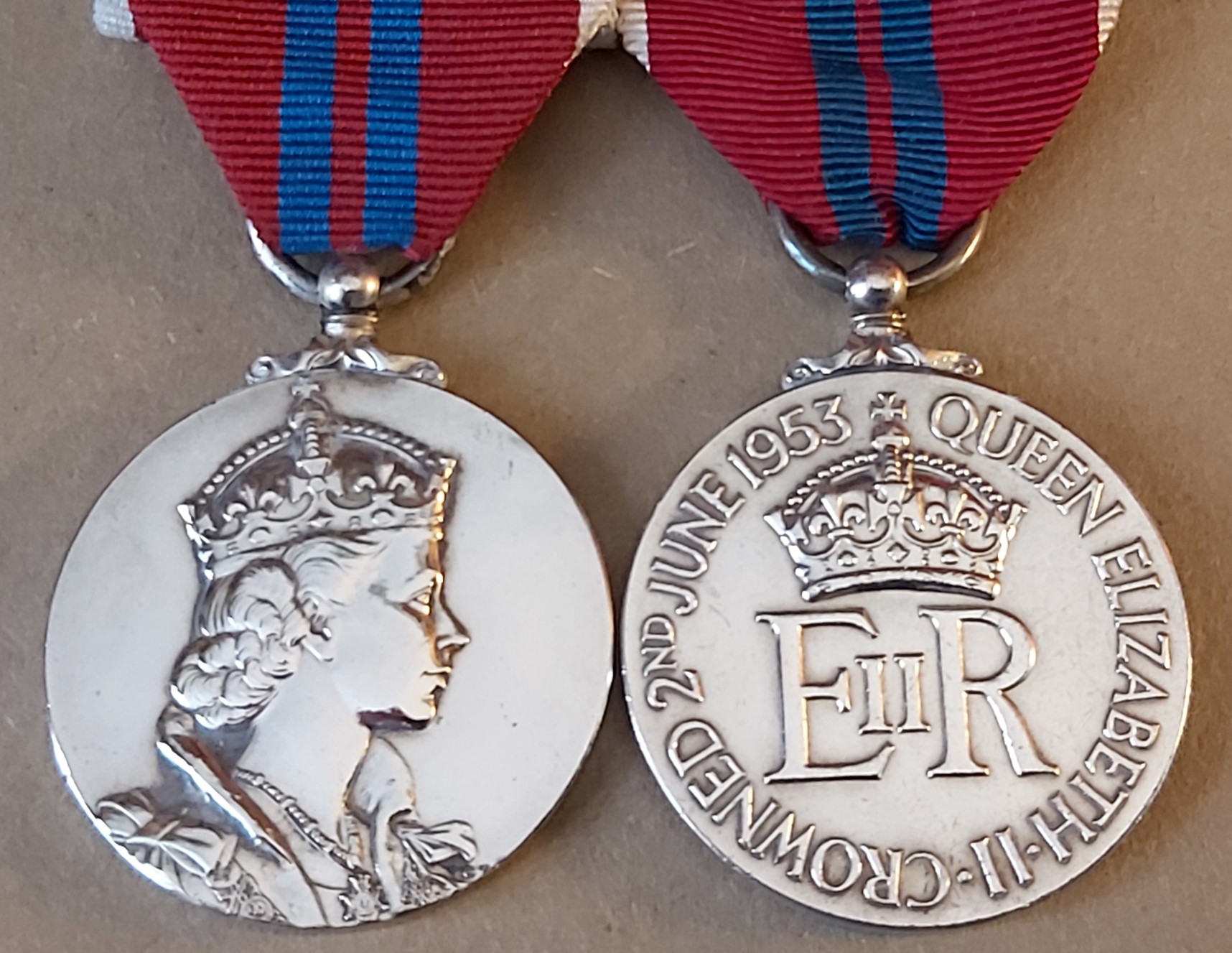 Home honours
Home honours
The royal authority was used to make several changes to the British honours system after 1952 and, as with some of the independence medals, several of the relevant documents were gazetted.
The fourth of the 20th century’s coronation medals was struck by the Royal Mint to commemorate the ritual in Westminster Abbey on 2 June 1953 and showed the Queen’s crowned effigy by the artist Cecil Thomas, an image that was later used on the independence medals and many of the other awards of the reign, including the George Medal and the Imperial Service Medal.
A special category of awards was created in the Order of the British Empire in December 1957, when an oak leaf emblem was introduced to be worn for “appointments, promotions or awards when granted for gallantry”, as some form of distinction was deemed necessary to identify the occasions when the order and its medal were used to mark such acts. The British Empire’s statute had an impact on The Gazette, as it required that “in the announcement of the conferment of the award it shall be stated that the award has been made for gallantry”. The first awards were gazetted in February 1958 and involved officers of the Essex County Constabulary who arrested an armed criminal (Gazette issue 41302).
It was decided that the gallantry emblem was not satisfactory, as the level of award depended on the rank or level of responsibility of the individual concerned, rather than the degree of gallantry. The prime minister therefore announced in the House of Commons in June 1974 that the use of the British Empire for that purpose would cease, and that the role would be taken by the Queen’s Gallantry Medal that was created at the same time “for exemplary acts of bravery”. The Gazette of September 1974 recorded the first award to Alexander Callender, a chauffeur in the royal household, who helped during an attack on Princess Anne as she returned to Buckingham Palace (Gazette issue 46354).
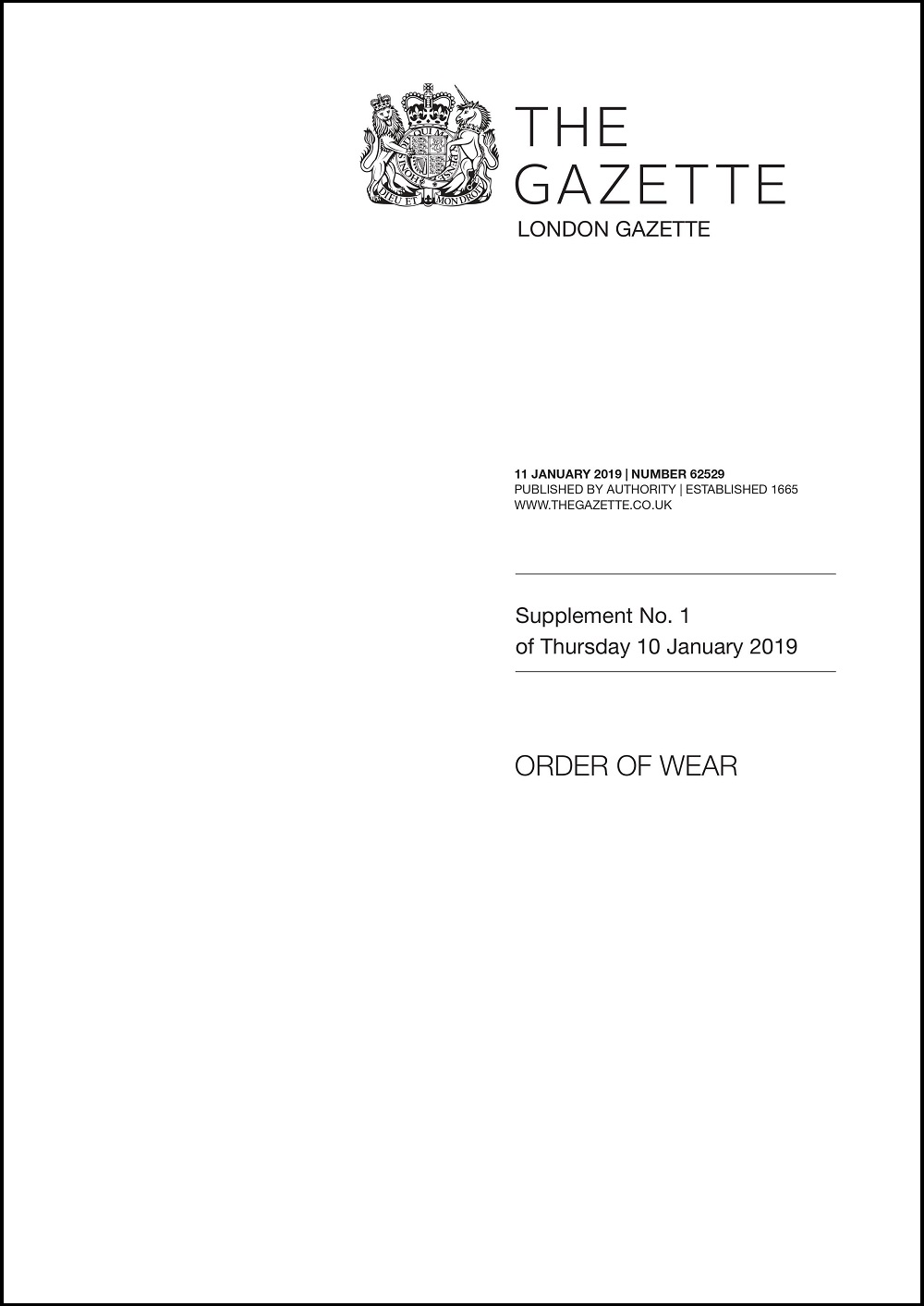
Several other honours that featured in the order of wear that was issued by the Central Chancery of the Orders in Knighthood in 2019 (Gazette issue 62529) were introduced during the reign, but the related royal warrants were not always gazetted. The warrant for the Queen’s Fire Service Medal from 1954 was published (Gazette issue 40196), but not the founding documents for the Conspicuous Gallantry Cross in 1995, or the Queen’s Ambulance Service Medal in 2011.
Two decorations were discontinued because their role had been superseded by other honours. The royal warrants of December 1971 ended the use of the Albert Medal for bravery in saving life at sea or on land, and the Edward Medal for bravery in mines, quarries and other industrial settings, and provided that surviving medallists should be treated as if they had been awarded the George Cross (Gazette issue 45566). This decision led to a series of investitures at which the Queen presented the George Cross to former holders of the two medals.
A number of other honours lapsed because they related to nations of which the Queen was no longer the head of state, as with the Badge of Honour for former colonies such as Fiji, Kenya and Uganda. A similar change resulted in the withdrawal of awards such as the Queen’s Medal for Bravery in South Africa, and the police long-service medals from Ceylon (Sri Lanka) and Mauritius.
Some of the royal medals did not feature in The Gazette, as in the case of the warrants for, and the awards of, the Queen’s Gold Medal for Poetry, which evolved from medals that were created by King George V in 1933, and the Queen’s Medal for Music which was established in 2005. The Gazette certainly reported the warrant of July 2009 that created the Elizabeth Cross, but not the names of those who received this new form of recognition “to mark nationally the great loss and sacrifice that the families of those in the service or former service of [the] armed forces who have died on operations or otherwise” (Gazette issue 59144).

One change to an existing honour that went beyond altering the sovereign’s effigy and cypher related to the knight bachelor’s badge, as a warrant of July 1973 revised the structure of the insignia and saw the sword and spurs being retained but now incorporated into a badge that could be worn from a riband of red and gold about the neck (Gazette issue 46042). In this way, the insignia continued to recall both the sovereign’s role as the fountain of justice and honour and the significance of the sword and the golden spurs that were presented to the Queen during the coronation service in 1953 (Gazette issue 40020).
The place of the royal symbols in public life was illustrated at Windsor Castle in March 2022 when the Prince of Wales conferred the honour of knighthood on more than 20 justices of the High Court who could then wear the badge with its sword and spurs (Gazette issue 63678), recalling the case of Sir Matthew Joyce, the judge who in December 1900 became the final knight of Queen Victoria’s long reign.
Jubilee medals
The 70th anniversary of the Queen’s accession was reached on 6 February 2022, and the occasion was marked by the issue of a commemorative medal. This was the seventh in the series of “succession medals”, which began with the Victorian issues of 1887 and 1897, and was followed by King George V’s medal from 1935, and then the medals for the silver jubilee in 1977, and the Queen’s 50th and 60th anniversaries in 2002 and 2012.
The jubilee medals of 1887 to 2012 all feature in the order of wear that was published by the Central Chancery in 2019, even though there are no surviving holders of the two Victorian medals, or any recipients of medals relating to the sovereigns whose names were proclaimed at the Accession Councils of 1901 and 1910.
The Gazette did not report the design or the award of the Platinum Jubilee Medal from 2022, but it did publish a number of royal proclamations connected with the anniversary, starting in September 2021 when it was declared that coins would be struck to mark the occasion, showing the number 70, with the royal cypher and the dates 1952–2022 (Gazette issue 63489).
The Gazette also recorded the proclamation of March 2022 (Gazette issue 63646), which explained that under the Coinage Act 1971, the sovereign had the power “with the advice of our Privy Council, by proclamation to determine the denomination, the design and dimensions of coins to be made at our Mint”, and then described coins that provided a direct link to the golden spurs, as they combined the Queen’s effigy on the obverse with “our signature set against a background of medals and inscribed ‘The bestowing of her honours’.”
The reign of Queen Elizabeth II came to a close as she died peacefully at Balmoral Castle during the afternoon on 8 September 2022 (Gazette issue 63808), at which point her son Charles, Prince of Wales, succeeded to the Crown.
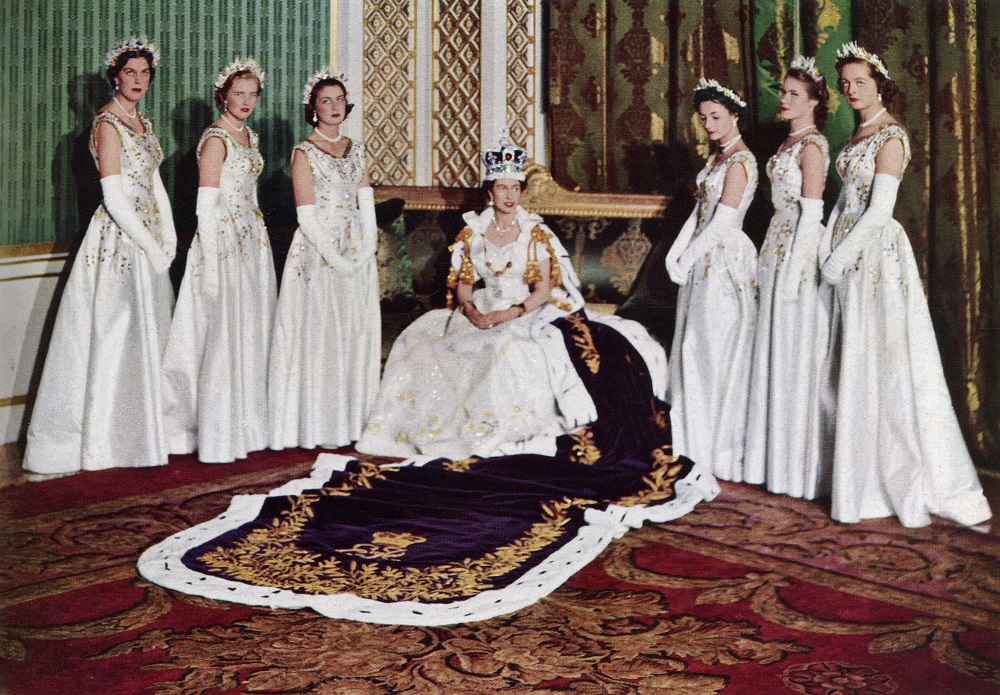
About the author
Russell Malloch is a member of the Orders and Medals Research Society and an authority on British honours.
Let us know what you think of this article by getting in touch. All feedback is welcome.
See also
This month in history: The coronation of Queen Elizabeth II
What is the 'Order of Wear' for British honours, decorations and medals?
Find out more
Succession to the Crown Act 1707 (Legislation)
Royal And Parliamentary Titles Act 1927 (Legislation)
Indian Independence Act 1947 (Legislation)
Royal Titles Act 1953 (Legislation)
Succession to the Crown Act 2013 (Legislation)
Regency Act of 1937 (Legislation)
Coinage Act 1971 (Legislation)
Images (in order of appearance)
The Gazette
The Print Collector / Alamy Stock Photo
Russell Malloch
Russell Malloch
SuperStock / Alamy Stock Photo
Russell Malloch
Russell Malloch
Russell Malloch
Russell Malloch
The Gazette
Russell Malloch
© Illustrated London News Ltd/Mary Evans
Publication updated: 8 February 2023
Any opinion expressed in this article is that of the author and the author alone, and does not necessarily represent that of The Gazette.
